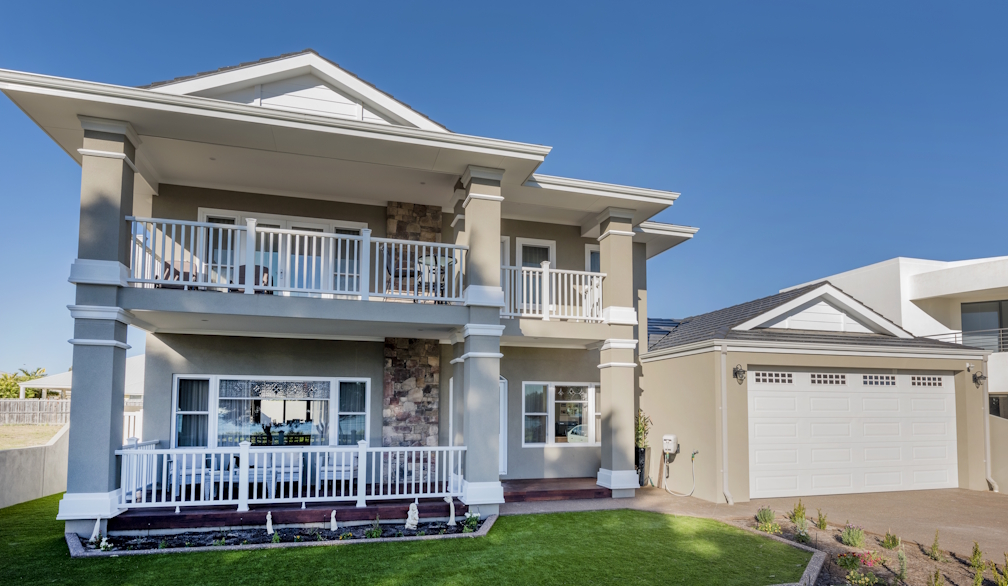How to Choose the Perfect Railing for Your Deck: Expert Tips from Trex
- Written by Scene Magazine

Railings are more than just a safety feature—they play a crucial role in defining the style and personality of your outdoor space. Whether you’re designing a deck for entertaining, relaxation, or increasing your home’s curb appeal, selecting the right railing can make all the difference in achieving a polished and cohesive look.
Despite their importance, railings are often left as an afterthought in the decking process, which can lead to budget overruns or design mismatches. Planning ahead ensures that your railing choice not only complements your deck but also aligns with your functional needs and aesthetic preferences.
Rod Schiefelbein, Australian Market Manager for Trex Company, and an outdoor living expert with over two decades of experience, shares his insights on choosing the right railing for your space.
- Create a Cohesive Look by Matching Railing and Decking
For a seamless, well-designed finish, consider pairing your railing with your decking material. Trex Transcend Railing and Trex Transcend® Composite Decking work beautifully together, offering a high-end, coordinated look that blends effortlessly with your outdoor surroundings. By choosing complementary shades and materials early in the planning process, you can create a harmonious, well-integrated deck that feels intentional rather than pieced together.
- Make a Statement with Contrasting Colours and Materials
If you’re looking to add a bold touch to your deck design, contrast is key. Mixing materials—such as pairing sleek, dark aluminium railings with lighter composite decking—can create a striking visual effect. Contrasting railing colours can also frame your deck, adding depth and definition to the overall design. For those who love a more contemporary look, Trex offers a range of railing styles and finishes that allow for endless customisation.
- Keep It Minimalist with Sleek Cable Railings
For homeowners who prefer an open, modern aesthetic, cable railings are an excellent option. Their slim, unobtrusive design ensures that your deck remains the focal point while still providing the necessary safety features. This style is especially popular for decks with scenic views, as the minimalistic cables allow for unobstructed sightlines, making your outdoor space feel even more expansive.
- Opt for Low-Maintenance Composite Railings
If you want a stunning deck without the hassle of regular upkeep, composite railings are the way to go. Unlike traditional wood railings, which are prone to warping, cracking, and peeling over time, Trex composite railings are designed to withstand the elements with minimal maintenance. They offer long-lasting durability and an attractive finish that requires little more than the occasional rinse with soap and water—perfect for busy homeowners who want to spend more time enjoying their deck and less time maintaining it.
- Elevate Your Deck with Ambient Lighting
A well-designed railing system isn’t complete without lighting to enhance both safety and ambiance. Integrated deck lights can be installed on rail posts, under cap rails, or even within stair risers to create a warm, inviting glow that extends the usability of your outdoor space into the evening. Trex Solar Post Cap Lights offer a stylish, energy-efficient way to illuminate your deck without the hassle of wiring or high electricity bills. By incorporating lighting into your railing design, you can highlight the beauty of your deck while making it safer for guests after dark.
Whether you’re designing a brand-new deck or upgrading an existing one, choosing the right railing is essential for both style and functionality. By considering your design preferences, maintenance needs, and safety features from the start, you can create an outdoor space that is not only visually stunning but also built to last. With Trex’s wide range of composite and aluminium railing options, there’s something for every homeowner’s taste. Plan your deck and railing together to achieve a flawless outdoor living space that’s both practical and beautiful.


















